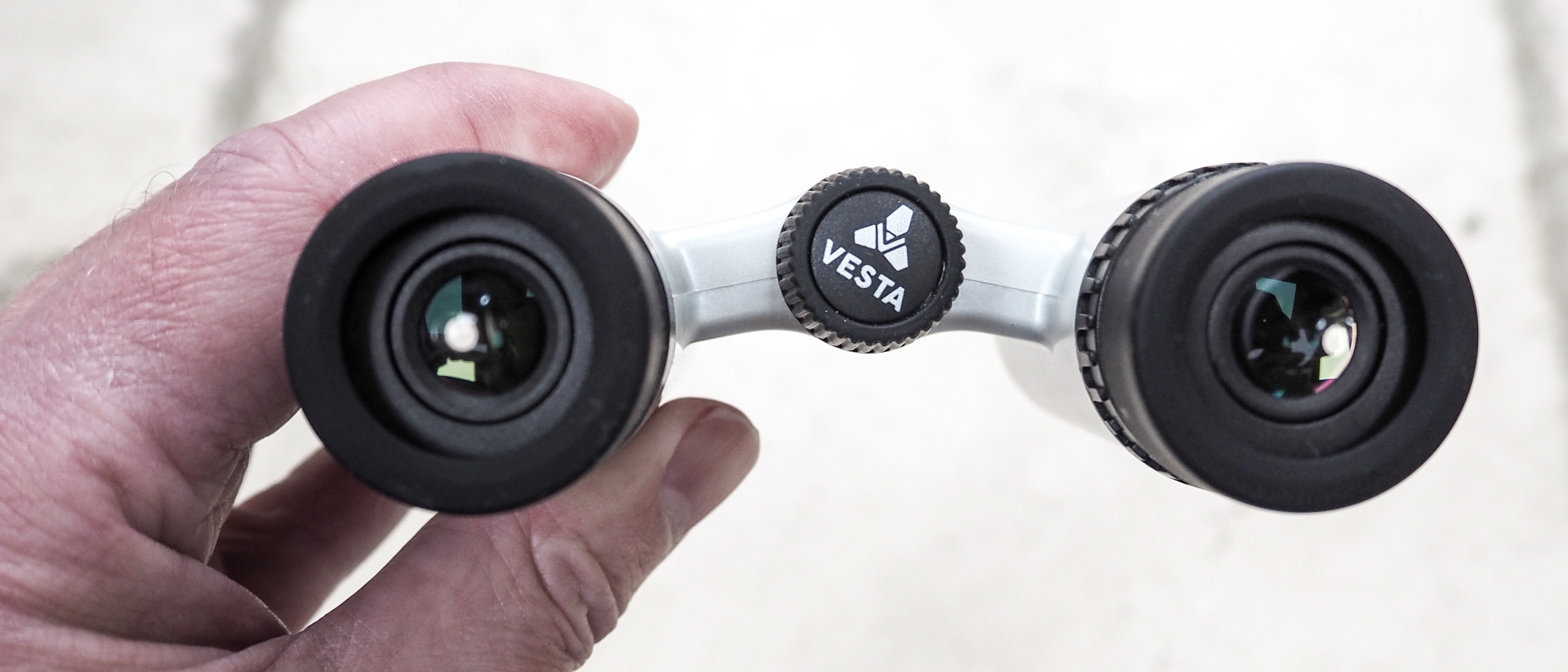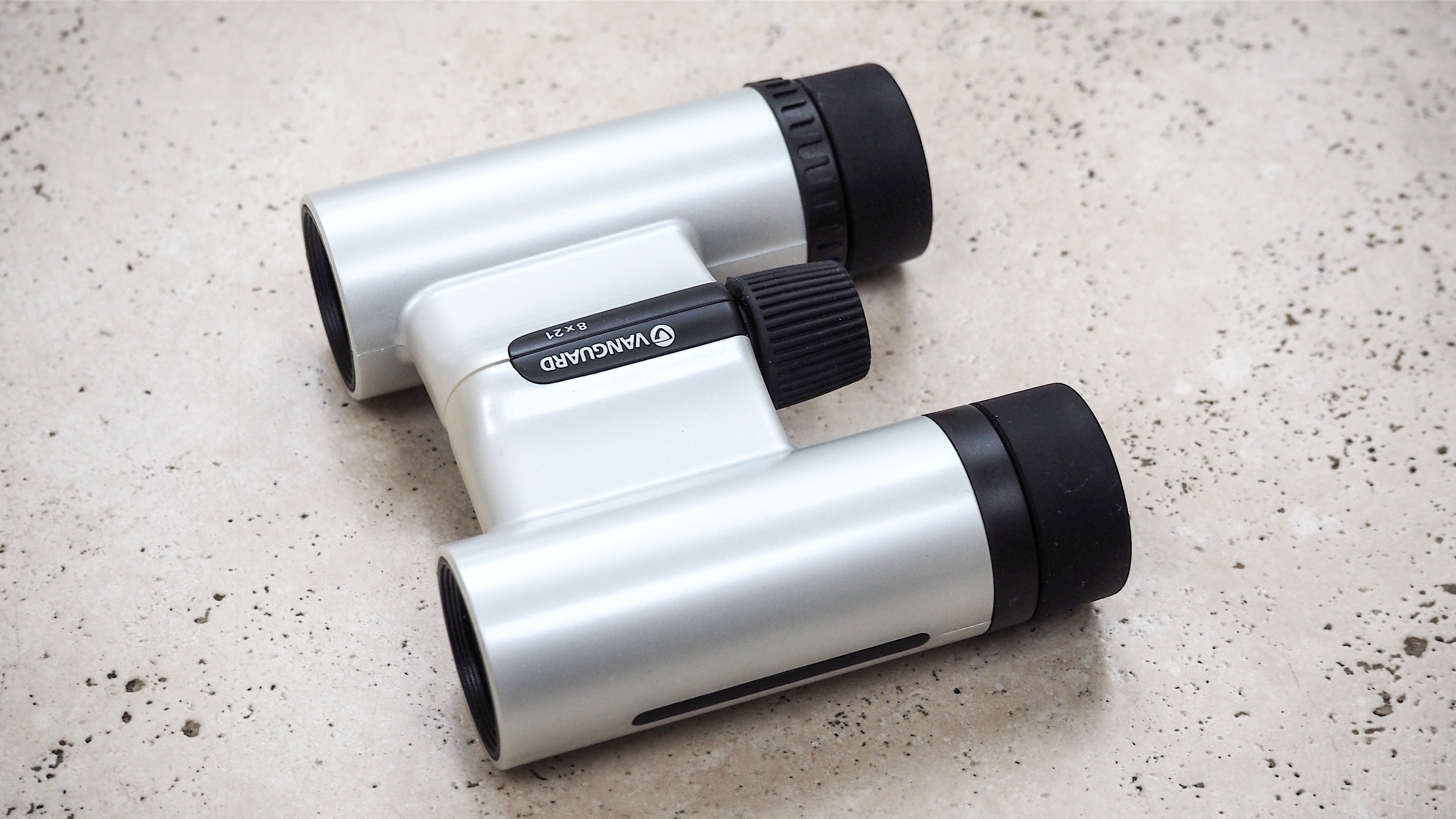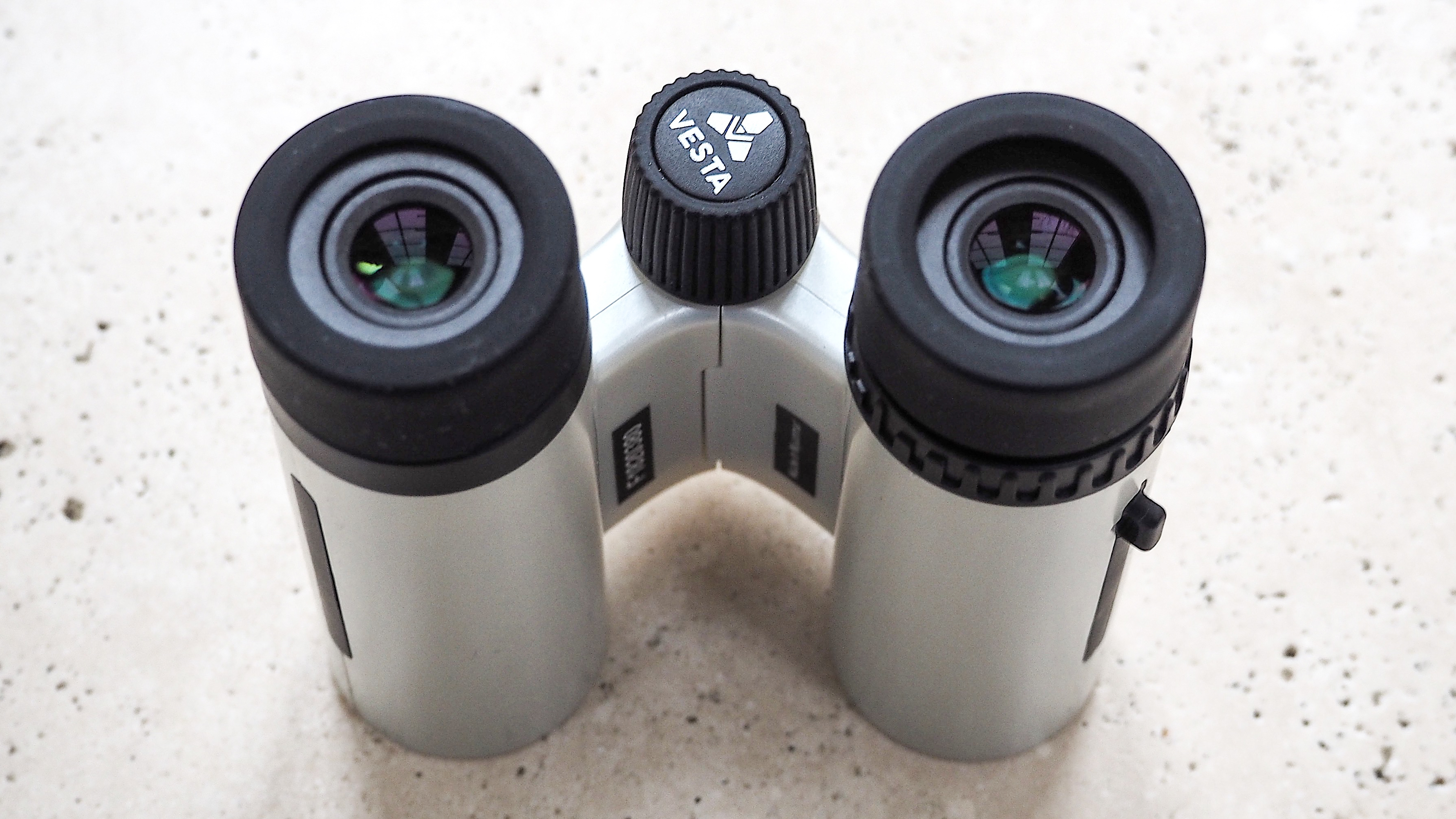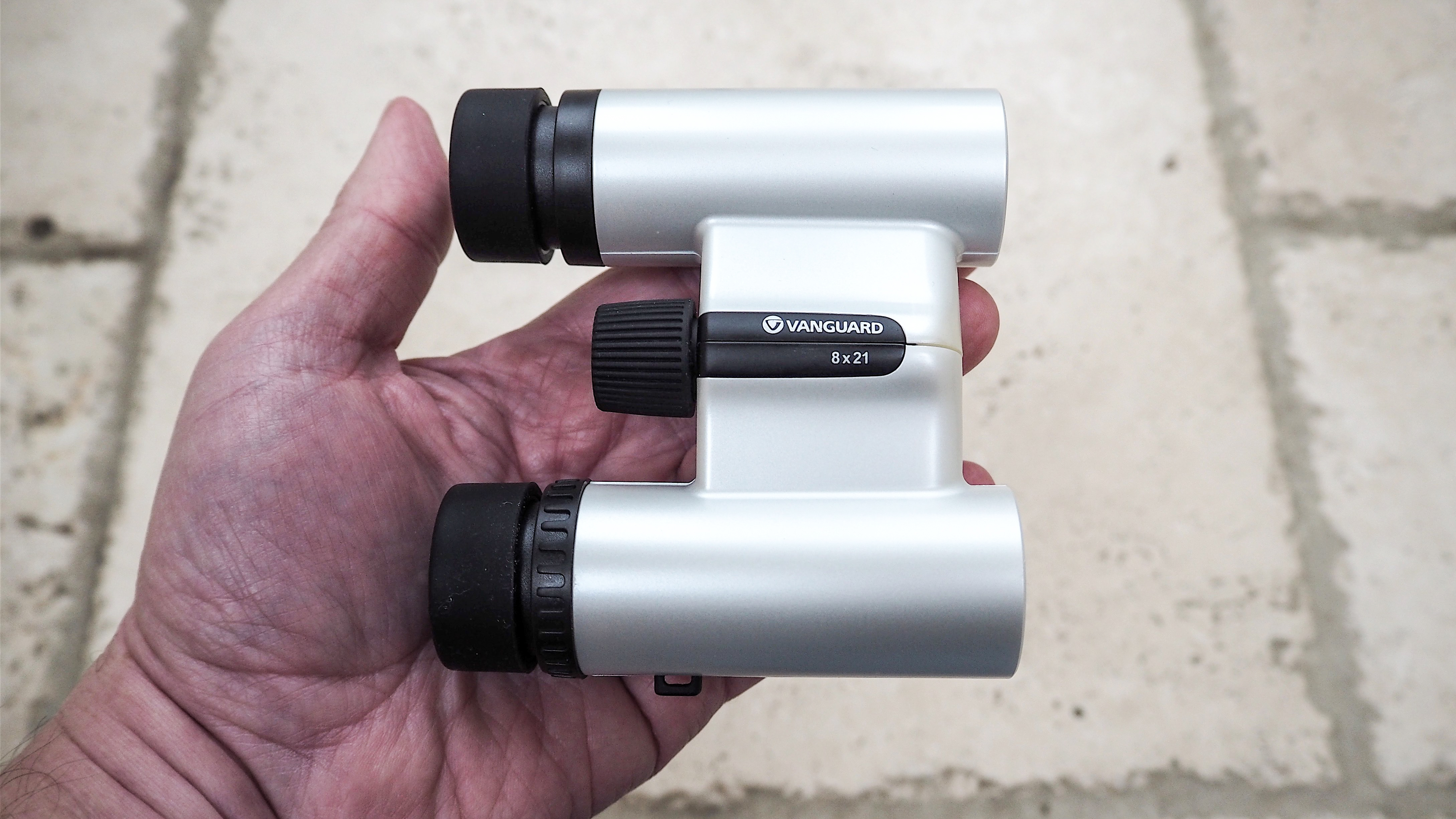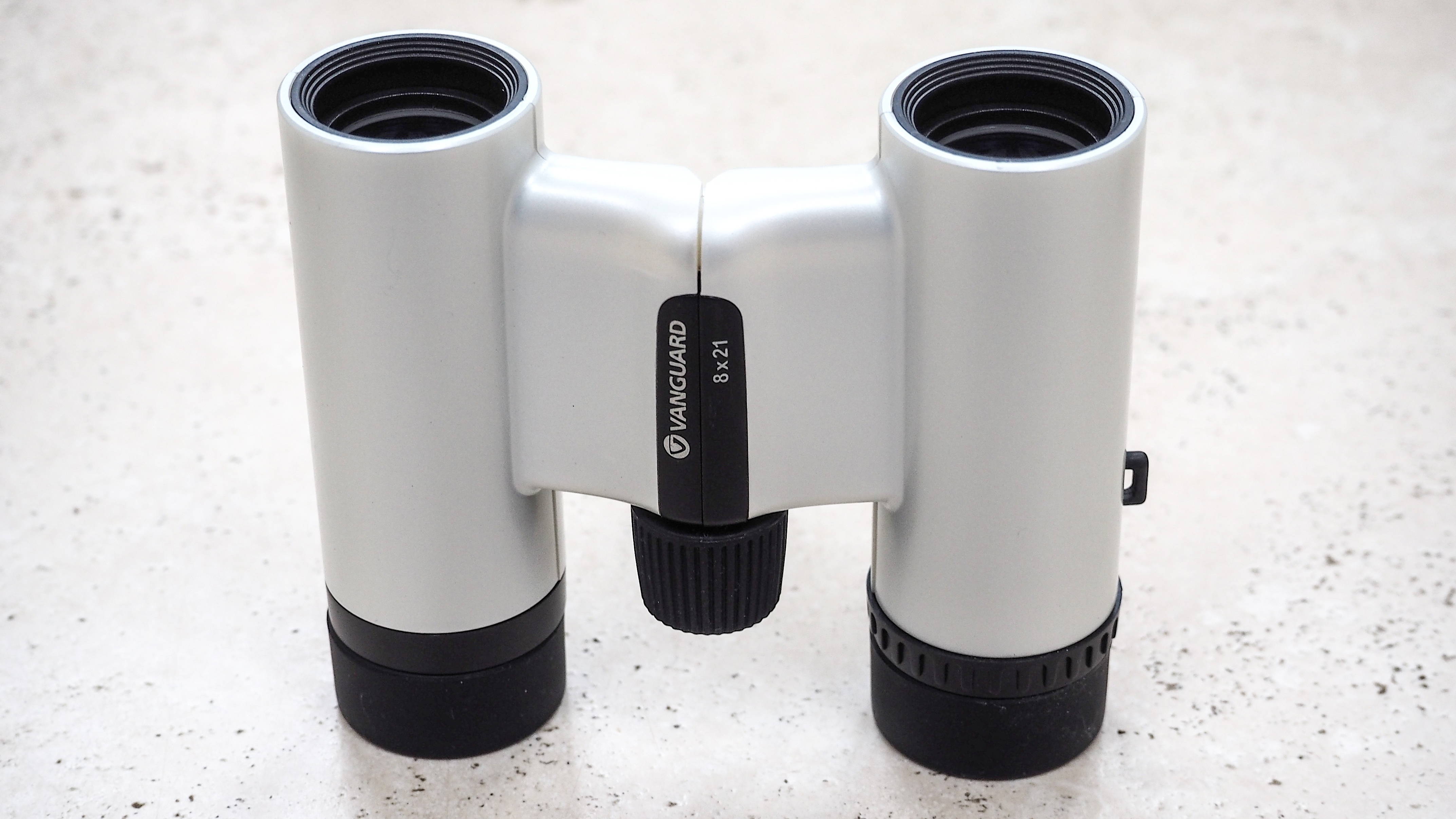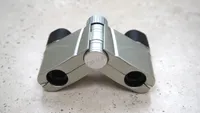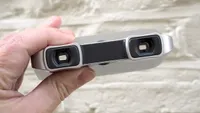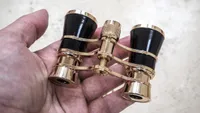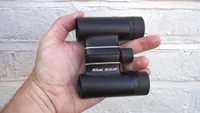Digital Camera World Verdict
Weighing just 195g and fitting in our palm, the Vanguard Vesta 8x21 is certainly an unobtrusively portable option for everyday observation. It’s an obvious choice too for anyone who wants to bring subjects closer to them from afar at outdoor concerts or sporting events, or is going travelling. At a pinch the small size also makes it an option for a night at the opera, even though a 3x or 4x binocular might be better if we’re already as close as the stalls. Still, its aluminium alloy build quality is better than most budget binoculars, performance veers between adequate and good depending on available light, and in broad terms it does feel like we’re getting decent value for money here.
Pros
- +
Compact, lightweight and inexpensive
- +
Central folding mechanism to adjust inter pupillary distance
- +
Good value for money overall and a good option for all the family
Cons
- -
A modest 21mm objective lens isn’t the best for viewing when light levels drop
- -
Sharpness inevitably no match for higher priced, larger lens alternatives
- -
Slip-on rubber caps easily mislaid
Why you can trust Digital Camera World
Most of us have had an occasion when we’ve wished we had a pair of binoculars to hand. However the bulk and weight that often goes with such devices means that 99% of the time we don’t, as carrying them involves foresight and planning ahead. And, when it comes to holidays and travel when we might actively consider packing one, do we really want to be carrying a binocular around all day for sightseeing if we’re only occasionally going to use it?
Enter the Vanguard Vesta 8x21. This one could potentially tick the box for casual observers by virtue of being lightweight at just 195g and so compact that it will fit within the flat palm of our hand, or slip readily into a jacket pocket, handbag or man bag.
While the modest specification offered here wouldn’t make it our first recommendation for serious birding or wildlife watching, there are many circumstances in which a very compact binocular is nevertheless the best tool for the job. For example when we want to bring athletes that much closer from our seat faraway in the stands, or performers’ faces more clearly into focus at a concert.
So, while those with specific tasks or interests may want to look elsewhere for a more precise fit, for everyday use the Vanguard Vesta 8x21 looks like a convenient and useful option. So how does it perform in practice?
Specifications
Magnification: 8x
Objective lens diameter: 21mm
Field of view at 1000 yards: 371 feet
The best camera deals, reviews, product advice, and unmissable photography news, direct to your inbox!
Field of view at 1000 metres: 124 metres
Closest focusing distance: Not given
Eye relief: 10mm
Weight: 6.9oz / 195g
Dimensions: 3.7x4.17 inches / 94x106mm
Key Features
Arriving with a nice sturdy and spongy carry pouch and thin neck strap, the headline feature of this roof prism type binocular is obviously that 8x magnification married to a 21mm objective lens, which is pretty by-the-books entry-level stuff. Of course there have to be compromises to enable such a compact form factor, but this example doesn’t feel unduly hindered by them. Indeed the 8x reach is useful out of the box and the 21mm lens’ performance appears perfectly adequate under daylight conditions.
As the broad rule of thumb is that the bigger the lens, the clearer and sharper the resulting image, so to be picky we feel 21mm is a little on the small side for more challenging, lower light conditions.
That said, the best tool for the job is the one you have with you. We’re more likely to slip the Vanguard Vesta 8x21 into our pocket on the off chance of needing it than a larger, bulkier and much more expensive alternative like the otherwise similarly specified Canon 8x20 IS; as impressive as the latter is for those prepared to fork out for body integral anti shake.
Here we’re getting the bare basics. We had the light silver ‘White Pearl’ version in for review, and there are three other different colored though otherwise identical options, including black (‘Black Pearl’), light bronze (‘Champagne’), and pastel pink (‘Rose Gold’). The binocular appears to be manufactured from hard plastic on initial inspection, but we were told it is actually a form of aluminum alloy. So how does the product handle overall? Read on to find out.
Build & Handling
Unlike some compact alternatives, this option doesn’t feel toy-like. In fact the build quality of the made in Myanmar Vanguard Vesta 8x21 is reassuringly rigid when squeezed in the hand. Its central folding mechanism, that allows us to adjust the distance between the eyepieces to best suit our own eyes for viewing comfort, is surprisingly stiff. While that means we have to apply a small amount of force, at least there’s no chance of jogging the mechanism accidentally once we’ve found our viewing sweet spot.
Impressively given its diminutive size and price, Vanguard has included slip-on rubber protective caps for both lens and eyepieces, the latter of which have a rubberized surround. OK, there’s no way to tether the caps to the provided strap to prevent them getting lost with use but it’s hardly a deal breaker, as for the price of a Chinese takeaway for two we’re lucky to be provided even with this basic element.
While a small lug is provided on the lens barrel for attaching the provided strap, operation is controlled via the familiar centrally placed focus wheel. Here that’s slightly ridged or knurled to provide easier finger purchase. Providing additional comfort the eyepieces are of the twist and pull-up variety, while there is a dioptric adjustment ring encircling the right eyepiece for those of us who wear glasses to fine tune results further. Again, such features are a welcome and unexpected bonus at this pocket money friendly price point.
Performance
As indicated, operationally these everyday binos are stripped back to the fact that they’re pretty much just point-and-view. That’s just what we’d want from an inexpensive entry-level option that will be as suited to children in the family as they are to grown ups. The central focusing knob on the Vanguard Vesta 8x21 has just the right amount of give to enable precise and quick adjustment without being overly stiff or loose.
And the modest core specification does include multi-coated optics to improve light transmission. While focus falls off towards the edges of frame as expected, even on a dull overcast day sharpness is still pretty good, if inevitably falling short of being a match for higher priced, higher specification alternatives. Chromatic aberration is kept well under control and, viewed as a general purpose everyday pair of binoculars suitable for a wide range of intended subjects, these appear to punch above their weight for the price.
Verdict
Outwardly unassuming, as something to stick in our pocket for occasional use the Vanguard Vesta 8x21 offers good value for money in terms of build quality and bundled extras. While viewing is best on a clear day with plenty of available light, in more general terms our rating of their performance veered between adequate and good. In terms of size and price tag, however, we’ve very little to grumble about.
If you want one small, pocket sized binocular as an at-hand observation tool for a broad range of subjects, that has a user friendly centrally located focus knob, as well as an integral folding mechanism and dioptric control ring to manually fine tune viewing, then look no further than the example here.
Alternatives
If it’s compactness we seek above all else, then there are further diminutive and inexpensive alternatives including the Carson Operaview OV-410 4x10 binocular, for which the width can likewise be adjusted to best suit our own eyes. The Christmas-cracker toy-like build isn’t a patch on the Vanguard Vesta 8x21, however, nor is the Carson’s very modest core 4x10 specification.
Offering a lower 3x magnification still but a slightly bigger and theoretically brighter 25mm objective lens is the Japanese-designed Kenko Pliant 3x25 Slim. These are the most portable of all the options here in folding down into an almost flat, clamshell-like case, which will slip easily in our pocket. The 3x magnification, however, makes them more useful as opera glasses.
In terms of something a bit swankier, there’s the ultra-portable, German-made Eschenbach Glamour 3x25 binocular. This has a slightly bigger objective lens to let more light in during dim viewing conditions, such as in a theater, where you don’t particularly need a great deal more than the modest 3x magnification offered. Its design is rather old-fashioned, and the metal build model comes at a premium price.
Also, if you want a conventionally styled alternative, look at the Nikon Aculon T02 10x21, which is an all-around capable pair but does, unfortunately, come with a higher price tag.
Gavin has over 30 years’ experience of writing about photography and television. He is currently the editor of British Photographic Industry News, and previously served as editor of Which Digital Camera and deputy editor of Total Digital Photography.
He has also written for a wide range of publications including T3, BBC Focus, Empire, NME, Radio Times, MacWorld, Computer Active, What Digital Camera and the Rough Guide books.
With his wealth of knowledge, Gavin is well placed to recognize great camera deals and recommend the best products in Digital Camera World’s buying guides. He also writes on a number of specialist subjects including binoculars and monoculars, spotting scopes, microscopes, trail cameras, action cameras, body cameras, filters and cameras straps.
